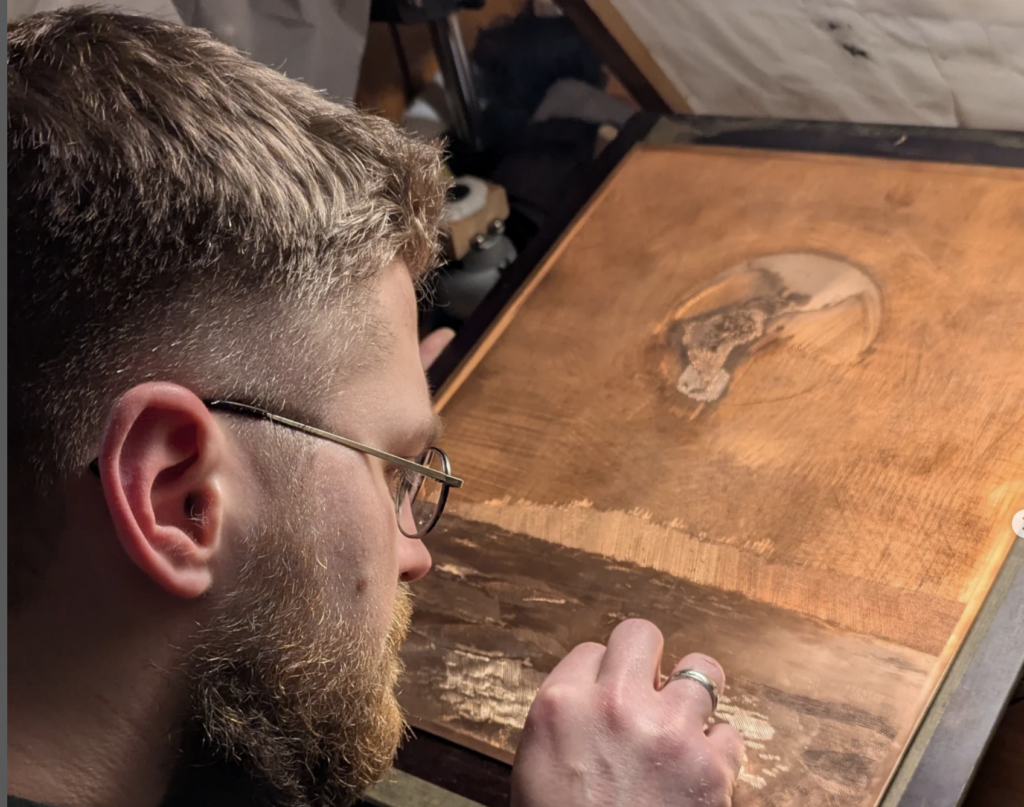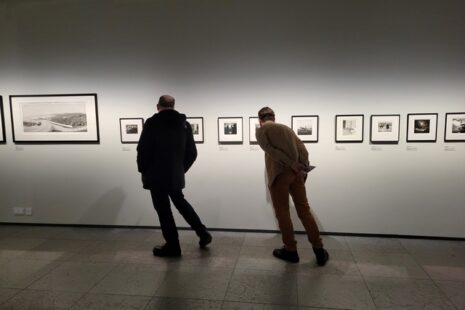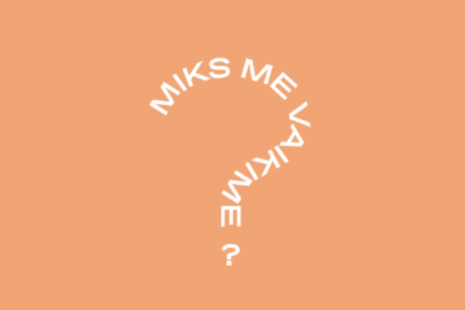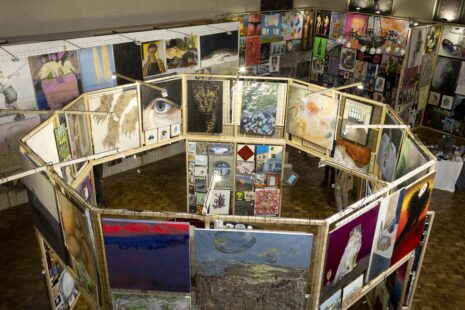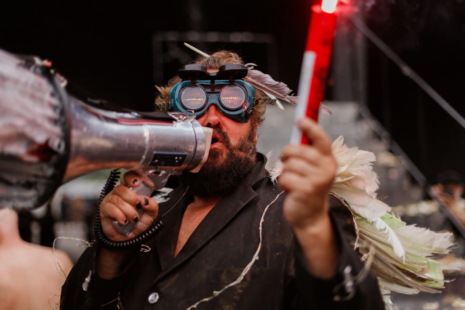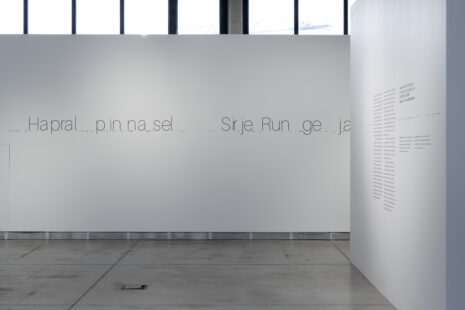Artist – is it a profession or a calling?
I think it’s different things at different stages in life. Right now – it is calling, maybe energy – profession.
Age: 31
Brightest childhood memory:
Drawing on the walls, as high as I could reach.
What is a workday like for an artist?
As I am not doing art full-time, my work as an artist starts in the evenings (usually about 20:30) once the kids have been put to bed (I have 3).
How do you draw inspiration for your creations?
Anything can trigger an idea: news, articles, research, and life. I usually don’t look for it. It just comes. Making my works takes a long time 3-4 months for a single project, so I have plenty of time to think about the next project. They will already be lined up by the time I finish an engraving.
What is the main question people ask when they hear you are an artist?
In my daily work I communicate a lot with people from abroad (3000+ from 80 different countries). Most of them have no clue that I engrave.
How would you describe your artistic style?
Old, with a twist of new?
Can you tell us about your family and how they have influenced or supported your artistic journey?
I grew up with a single mother. She always was very supportive of my art and never pushed me to do something else. Artist Mārtīte Kluša was a great influence in my forming years. My wife is a huge help in what I do now. I wouldn’t be able to do what I do now without her. In other words, a lot of strong females have helped to shape me and where I am now.
How do you balance your time between family and your art?
And full-time work 9:00-17:00. Sometimes, it is a struggle. But, every evening I engrave for three hours. In the long term, this time sums up. In between work and art work, I try to spend quality time with family: museums, activities, historic sites and nature.
Are there any other artists in your family? How do they inspire or collaborate with you?
No professional artists. From what I have heard from my aunt, my mother had a great sense of style and she was a very fashionable lady. She used to be a seamstress. My oldest daughter (6 years old) is learning to play the violin.
How do your family members react to your work? Do they have any favourite pieces?
I believe my children are still too young to understand what the dad is doing. I think my wife appreciates it. Her couple of favourite works are the ones I made as an art student (circuit constellation).
Can you share a memorable experience involving your family and your art?
My children have always been attracted to my printing press. It spins so nicely!
Please share the story of one of your works
As I just finished a piece at the moment I am having this interview, I will talk about it – Moths. Light (natural and artificial) is emerging as one of the themes in my works. In the continuation of this theme, the Moths engraving depicts a mobile phone in the night. The light of the screen is attracting moths that are swarming around and landing on it. The work is also a commentary on people. We, same as moths, are attracted, and addicted to our smart device screens. Unable to resist the allure of the technology.
What are your future plans as an artist? Any major exhibitions you would like to have or places you would like to reach?
I haven’t had a proper, large solo exhibition. I have had small solo shows as a décor in a bookstore or a café, but not in a gallery. I would love someday to have some of my works on a permanent display somewhere people could see them.
Printmaking is often seen as a labour-intensive and time-consuming process. How do you stay motivated and passionate about your work?
It most definitely is! Engraving is the slowest and most punishing of them all. But, I do not think about staying motivated. Engraving is something I cannot live without. If I cannot engrave due to some reason I very quickly get depressed, anxious, and easily irritable. The challenge of engraving helps me unwind and contemplate.
How do you see the future of printmaking, especially traditional techniques, in the digital age?
As everything becomes more digital and AI continues to develop, the physical media (printmaking, painting, sculpture, etc.) will become more and more relevant. Computers and AI do not make mistakes (they can even now get the fingers right!). The beauty of imperfection, human touch, the texture of paper, relief, emboss, the roughness of the pigment, the essence of the artist that is trapped in every line engraved with burin (engraving tool), every brush stroke. Well, that is something the computers can’t do yet. Who knows, maybe Tesla Bot will start mixing oil paint on pallet soon and prove me wrong. In other words, I think the more manual the process is, the better for the future.
You mentioned combining copper and wood engraving in your work. What challenges did you face in this innovative approach, and what have you learned from it?
Yes, some of my works do combine these techniques. This might get too technical, but let’s dive in. They are completely opposite printmaking processes. Copper engraving – intaglio (the ink is rubbed inside the engraved lines – the lowest parts of the plate are printed), wood engraving – relief printing (the ink is rolled on top of the printing block – the highest areas are printed). Everything is different about these techniques: ink, paper, printing press, etc. The only things that are similar are the engraving tools and the process of engraving (in broad terms). I have tried combining these techniques at the same time on the same sheet of paper. Nowadays, to yield the best result, I tend to print them separately on different papers, then combine them via chine-collé – as the papers are rolled through the printing press they are pressed and bonded together.
What role do you believe art plays in society today, and how do you hope your work contributes to that role?
When I do my work, I try not to concern myself with these matters. I merely create what I want to create. I believe artists have to be quite selfish in this regard and not bend to the whims of others. That being said, afterwards, once the work was created, in retrospect, I see that there might be some commentary on society, events, the present and the future. It is also quite a banal thing to say, but the value is in the eye of the beholder. Each viewer will dissect the artwork and attach their own meaning that arises out of their values and worldview.
Can you share any upcoming projects or exhibitions you’re excited about?
Not really. There’s not much free time these days. The free time is spent engraving and printing. Oftentimes, the exhibitions, artworks and generally interesting things find me when I engrave. I like listening to podcasts, and videos discussing a plethora of things: philosophy, politics, technology, etc.
What advice would you give to emerging artists who are interested in exploring printmaking and engraving?
Never do it for anyone else but you. Never give up! Art is the opposite of professional sports. Athletes earn their living while they are young. The last artist who does not give up succeeds. Just keep on doing it while others give up. Hone your craft for your entire life. Never stop learning and improving. There is a great quote by Hokusai: “From the age of 6 I had a mania for drawing the shapes of things. When I was 50 I had published a universe of designs. But all I have done before the age of 70 is not worth bothering with. At 75 I’ll have learned something of the pattern of nature, of animals, of plants, of trees, birds, fish and insects. When I am 80 you will see real progress. At 90 I shall have cut my way deeply into the mystery of life itself. At 100, I shall be a marvellous artist. At 110, everything I create; a dot, a line, will jump to life as never before.”
Favourite piece of music:
I listen to everything. There’s a gem in every genre. I am leaning towards post-punk the most.
Favourite book:
I am not an avid reader as I cannot do it while engraving. Not a big fan of audiobooks. When I do some reading, it’s usually printmaking or engraving-related. I have finished the Song of Ice and Fire series though.
My superpower is…
Patience.
When and whose exhibition did you last visit?
Having a family with 3 young children, we do not visit art exhibitions often. The top of our agenda is exhibitions at the Natural History Museum: animals, flowers, plants, mushrooms, bugs, etc.
My greatest art experience:
Too many to count, but some highlights would be: teaching engraving at the Art Academy of Latvia (it’s just one course right now, but I hope I will be able to do more of it in the future), visiting master engraver Lembit Lõhmus in Tallinn, Estonia, teaching a guest lecture at the HfBK Dresden University of Fine Arts, Germany. And, overall, touching people with my artwork.
If you could buy any artist’s work, what would it be and why?
I cannot afford it, but, being in the wonderful position of a printmaker, I oftentimes reach out to fellow printmakers whose works I like to do a print exchange.
Dream travel destination:
I love to go anywhere I haven’t been before, but, I would especially go with my wife to Northern Ireland or Scottish Highlands.
For me, happiness is…
I do not concern myself with happiness. It comes and goes. But, I find a great meaning in my family and engraving.
If I hadn’t become an artist, I would have been…
It’s hard to say, but as a young child, I loved programmes by National Geographic. I wanted to be an arachnologist! Who wouldn’t like to find treasure!? In a way, I’m now an archaeologist. Examining old engravings to reverse engineer how they were made. Try to replicate different effects.

